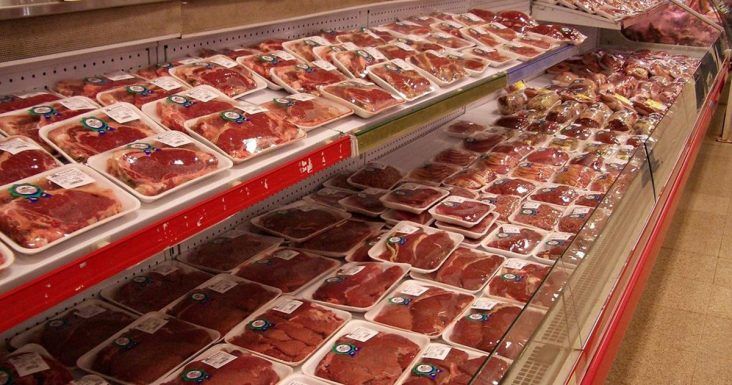Meat sector faces uncertain 2021
by January 20, 2021 8:01 am 1,436 views

The nation’s meat-producing sector outlook for 2021 will depend on several factors, including feed costs and consumer demand, James Mitchell, economist for the University of Arkansas System Division of Agriculture, said.
The pandemic produced two shock waves in the industry, first as the stay-at-home orders undercut food service use and then as the COVID-19 virus itself affected those working in the meat processing industry, shuttering plants.
“Pre-pandemic consumer food service and accommodation expenditures averaged 20% above 2012, but by April, food service expenditures were 43% below 2012 levels,” Mitchell said, noting the Bureau of Economic Analysis used 2012 as a benchmark. “As consumer panic buying set in and households began building up at-home food stocks, the meat supply chain faced a major logistical challenge. Meat and dairy products destined for restaurant outlets cannot simply be rerouted to retail grocery stores.”
In April, the second shock wave hit.
“Before COVID-19 began impacting U.S. meat processing plants, weekly federally inspected beef production was averaging 6.8% above 2019 production for the January-March period,” he said. “At its lowest, weekly beef production was 33.8% below 2019.”
Then, panic buying collided with tighter meat supplies and “retail beef, pork, and chicken prices reached record highs,” he said.
“In June, retail beef and chicken prices were 26% and 11% higher than 2019 prices,” Mitchell said.
The impacts of the pandemic on cattle prices reflected weaker feeder and fed cattle demand during the processing plant disruptions. Southern Plains feeder steer prices reached a low of $119.72 per hundredweight in April or 20% lower than in April 2019. Southern Plains fed steer prices reached a low of $94.31 per hundredweight, or 13% below 2019.
Some of the processing disruption rippled into the final months of the year for Petit Jean Meats of Morrilton.
In a Dec. 16 email to customers, company president Edward Ruff told customers Petit Jean was suspending holiday shipping and would restart in January.
“When the COVID crisis began, we shifted focus to help provide retailers with essential products,” he wrote. “In doing so, our standard Christmas plan shifted as well, and our holiday stock was depleted. Throughout this unprecedented time, we have been sending our products out the door as quickly as making the products.”
Ruff said the decision was difficult, but “our team members’ safety and well-being are critical,” noting that workers had been putting in “an unprecedented number of hours since the beginning of the pandemic.”
Cattle cycle dynamics, feed costs, and consumer demand will all play a major role in 2021.
Cattle inventories likely peaked in 2019 at 94.8 million head. This year saw a 0.4% reduction in total cattle inventories.
“Lower cattle prices in 2020, which significantly impacted cow-calf returns, and persistent drought in parts of the country likely impacted liquidation decisions in 2020, which have implications for cattle supplies in 2021,” Mitchell said. “Tighter cattle supplies in 2021 are an indicator of higher cattle prices. While cow-calf returns are expected to improve in 2021, rising feed costs might revise estimates lower than previously anticipated.”
Consumer meat demand will remain closely linked to the COVID-19 pandemic in 2021, both from a public health and economic perspective.
“The recent news that the U.S. will move forward with vaccinating segments of the population has brought optimism and markets certainly reflect this optimism,” Mitchell said. “However, it is important to realize that a vaccine does not necessarily alleviate all of the effects of the pandemic on the economy.”
Results from a consumer survey conducted by Glynn Tonsor at Kansas State show that only 19.2% of U.S. consumers would immediately begin to eat out more if a vaccine were made available to them. Economists and industry experts expect meat prices to moderate in 2021.
Stronger export demand from China and U.S. Department of Agriculture revisions to the current corn crop have resulted in higher feed costs and lower feeder cattle prices for the fourth quarter of 2020.
“The expectation for 2021 is that feed costs will remain elevated above historic levels, which will ultimately impact the value of feeder cattle to feedlots,” Mitchell said. “However, a less volatile market and feedlot placements returning to more seasonal patterns could be a positive for feeder cattle markets.”
